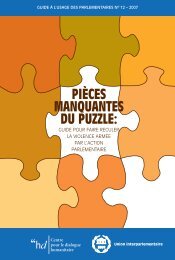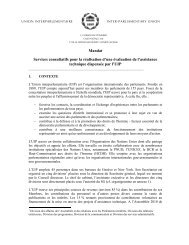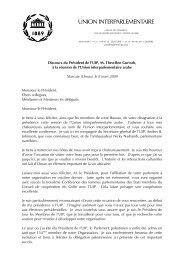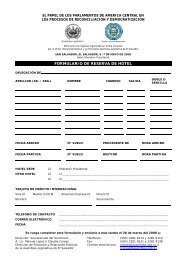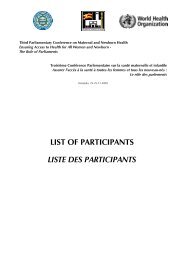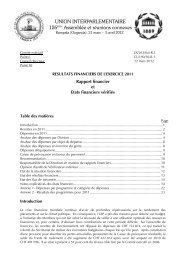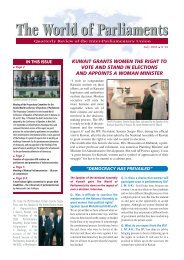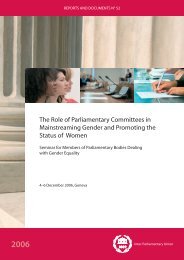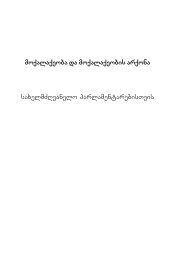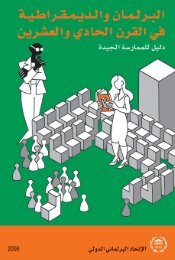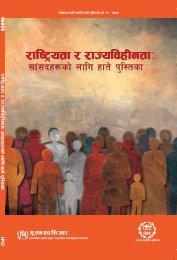MISSING PIECES - Inter-Parliamentary Union
MISSING PIECES - Inter-Parliamentary Union
MISSING PIECES - Inter-Parliamentary Union
Create successful ePaper yourself
Turn your PDF publications into a flip-book with our unique Google optimized e-Paper software.
<strong>MISSING</strong> <strong>PIECES</strong><br />
Yet model programmes exist to assist survivors of gun violence that can be<br />
adapted for replication in diverse settings. Two programmes in the city of<br />
Chicago (USA) focus on the disabling injuries that guns cause: one is designed<br />
to help short-circuit the cycle of gun violence in heavily affected communities;<br />
the other assists survivors cope with and overcome the life changes<br />
that a serious injury brings.<br />
The ‘In My Shoes’ project of the Schwab Rehabilitation Hospital serves a<br />
number of high-crime neighbourhoods in suburban Chicago. 27 It pairs a staff<br />
person with a volunteer who has been paralysed or otherwise seriously injured<br />
by a gun, who together visit schools and community centres to discuss how<br />
‘one shot can change everything’. The volunteers share their experiences<br />
of gun violence, provide a perspective from ‘the other side’ of the injury,<br />
and convey what therapy is like and how people’s attitudes change toward<br />
a person with disabilities. Since 1997, this project has reached about 24,000<br />
at-risk youth.<br />
‘Disabling Bullet’, a project of the University of Illinois at Chicago, aims<br />
to help young people seriously injured by a gun shot wound adjust to their<br />
new life. 28 The programme uses peer mentors—from the same economic<br />
and ethnic backgrounds and who themselves have been disabled for more<br />
than one year—to help recently injured youth navigate available services and<br />
support. Mentors help the newly injured locate jobs, understand disability<br />
laws, access educational opportunities, and secure housing. The relationship<br />
is also designed to provide safe space to discuss a wide range of issues,<br />
from violence to sexuality.<br />
COUNTING THE COSTS<br />
In the long run it is far more cost-effective for governments to invest in<br />
prevention efforts than to continually absorb the costs of treatment and<br />
rehabilitation, as well as the financial drain to society in years of lost<br />
productivity that come with gun injuries. States must not only bear much<br />
of the direct costs of emergency medical treatment and care (which victims<br />
are often unable to afford); gun violence also drains health systems—<br />
which may already be thinly stretched in low-income countries—diverting<br />
essential health resources from other pressing health priorities. 29<br />
In the US the estimated costs of gun-related violence including psychological<br />
costs and quality of life have been calculated at USD155 billion per<br />
year, or equivalent to 2.3% of GDP. 30 While these costs are very high, in<br />
poorer countries they can be even greater relative to national economic<br />
productivity. Brazil spends 10% of its annual GDP treating victims of violence,<br />
Venezuela consumes 11% and Colombia and El Salvador consume<br />
up to 25% each of their GDP. 31<br />
El Salvador provides an example of how the cost of firearm violence<br />
could be allocated to firearms owners. Recognising that firearms repre-<br />
68



